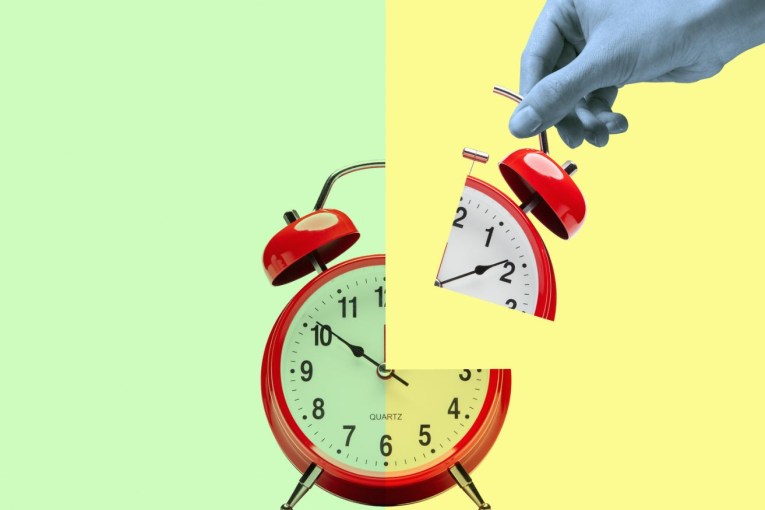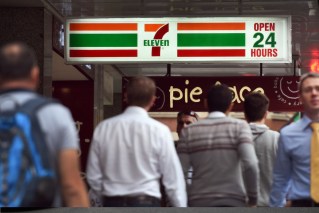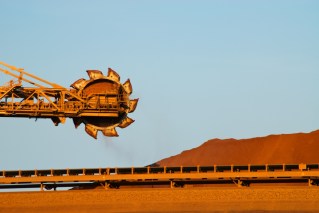Work more, cut back: RBA boss’s message to struggling Aussies

Economic growth across Australia slowed to 0.2 per cent in the March quarter, as households continued to tighten their belts amid a record spate of interest rate rises.
The March quarter data, released on Wednesday, followed a 0.6 per cent lift in the December quarter.
On an annual basis, gross domestic product as calculated by the Australian Bureau of Statistics lifted 2.3 per cent.
The numbers were slightly lower than the 0.3 per cent quarterly rise expected by markets.
Confirmation of national slowdown came as Reserve Bank governor Philip Lowe defended the central bank’s decision to raise official interest rates to 4.1 per cent. Dr Lowe also warned again that Tuesday’s 12th rate rise in little over a year would not be the last.
He told told the Morgan Stanley Australia summit in Sydney on Wednesday that RBA modelling showed about 15 per cent of mortgage borrowers faced negative cash flows, at a cash rate of 3.75 per cent. And he had a bleak message for those who were struggling.
“People can cut back spending, and in some cases find additional hours of work that will put them back into a positive cash flow position,” he said.
Dr Lowe said the current interest rate climate – with rates at 11-year-highs – were “going to be the environment we’re operating in for a while yet.”
“It’s too early to declare victory in the battle against inflation,” Dr Lowe
“Our job at the central bank is to make sure that this period of high inflation is only temporary.”
“High inflation is corrosive and damages our economy.”
“It erodes the value of money and savings, puts pressure on household budgets, makes it harder for businesses to plan and distorts investment.”
ABS head of national accounts Katherine Keenan said data released on Wednesday showed the slowest economic growth since the Delta COVID lockdowns in the September quarter of 2021.
“Private and public gross fixed capital formation were the main drivers of GDP growth this quarter,” Ms Keenan said.
GDP is the primary way that activity in the economy is measured. Spending by consumers, government and business, as well as investment and the difference between exports and imports, are all fed into the quarterly growth numbers.
The RBA predicts household spending will remain weak for some time.
Dr Lowe said it was weakest among households with mortgages, particularly those who had large loans compared to incomes, and renters. But he said some households had built up large savings piles during the pandemic, and had not yet run them down.
“Other households have very limited savings and few financial buffers,” he said.
“One of the other indicators we are monitoring closely is mortgage arrears.”
“These remain very low, although they have increased a little of late.”
“Banks report that their customers are managing to make their mortgage payments, although many have had to cut back on other spending.”
RBA’s close eye on wages
Dr Lowe said Tuesday’s surprise decision to lift the official cash rate by another 25 basis points was driven only partly by the Fair Work Commission’s recent minimum wages decision. It included a 5.75 per cent increase for one in five Australian workers.
“What has changed over the past couple of months is our assessment of the risks,” Dr Lowe said.
“It is not just the wages data, inflation for April was higher than expected.”
“We have seen housing prices rise again and we thought they would still be falling.”
“We have been prepared to be patient in getting inflation back to target but our patience has a limit and the risks are testing that limit and so we thought we needed to respond after holding steady in April.”
Dr Lowe reinforced his concerns about a possible wage-prices spiral.
“The concern would arise if the 5.75 per cent increase became a benchmark or a quasi benchmark for outcomes in private sector wages more broadly,” he said.
Dr Lowe said this didn’t happen with the FWC’s big increase to minimum and award wages last year. But as time wore on, it would be harder for wage negotiations to “stay where they are”.
“We are in a difficult position where society wants to protect the lowest paid workers but we have got to make sure that the higher inflation doesn’t translate into higher wage outcomes for everybody, because if that happens, the inflation persists,” he said.
He said Australia was still on track to bring inflation down without triggering a recession. But there were “significant risks” to his plan to bring inflation back to target reasonably quickly as the economy continued to grow.
“We are particularly attentive to the risk that inflation stays too high for too long,” he said.
“If that happens, expectations will adjust, high inflation will persist, interest rates and unemployment will be higher and the cost-of-living pressures on Australian families will continue.”
Elsewhere, Treasurer Jim Chalmers said he was pleased that Dr Lowe acknowledged the minimum wage decision did not drive Tuesday’s rate rise.
“Ordinary working people in this country are already bearing the brunt of these rate rises. They shouldn’t also bear the blame for them,” he said.
“We don’t have an inflation problem in our economy because people on the minimum wage are getting paid too much.”
Dr Chalmers said inflation was falling, but “not as fast as we would like”.
“It will hang around for higher than we’d like for longer than we like, but there is more evidence in this data today that inflation is moderating from its peak of around Christmas-time,” he said.
“We all want to see inflation moderate as quickly as it can, and we need to balance that against all of our other objectives of the same time.”
-with AAP








